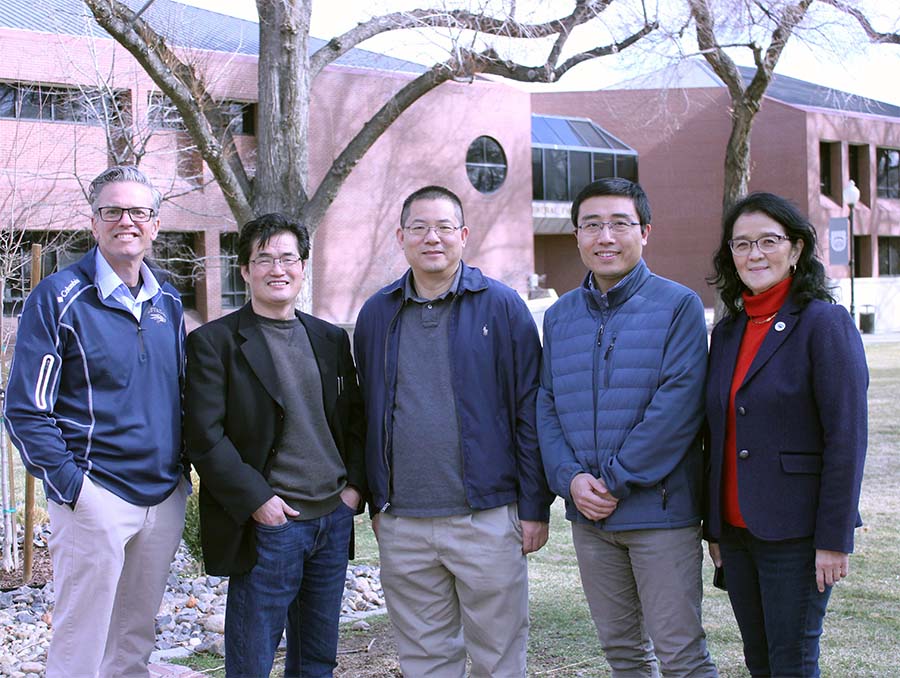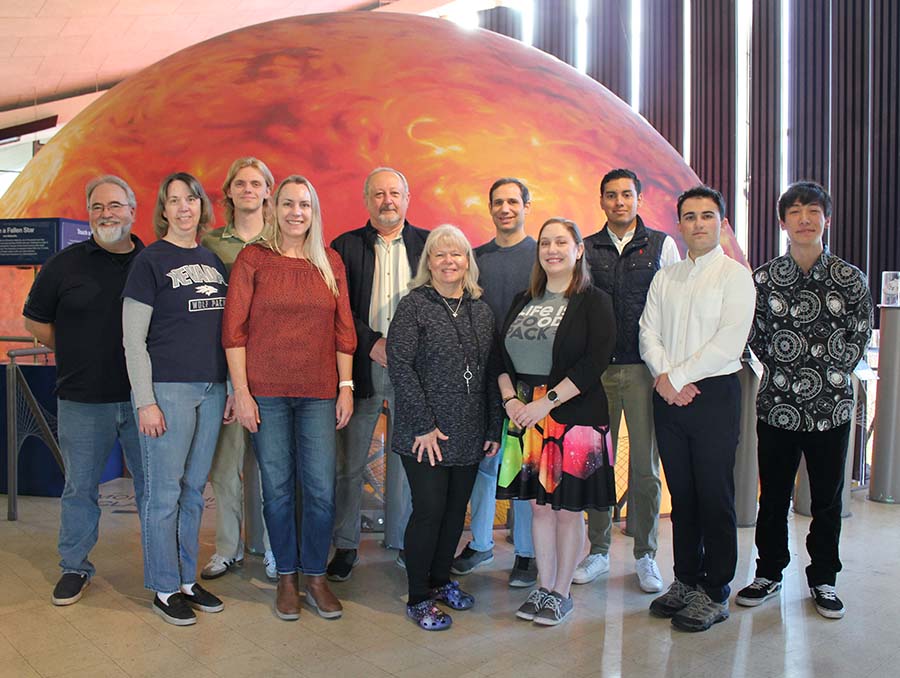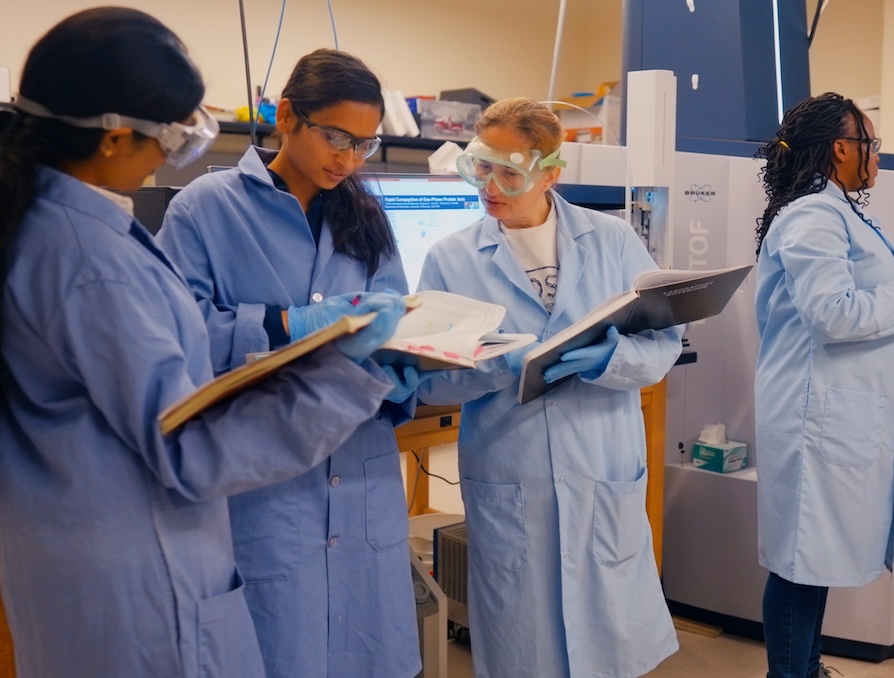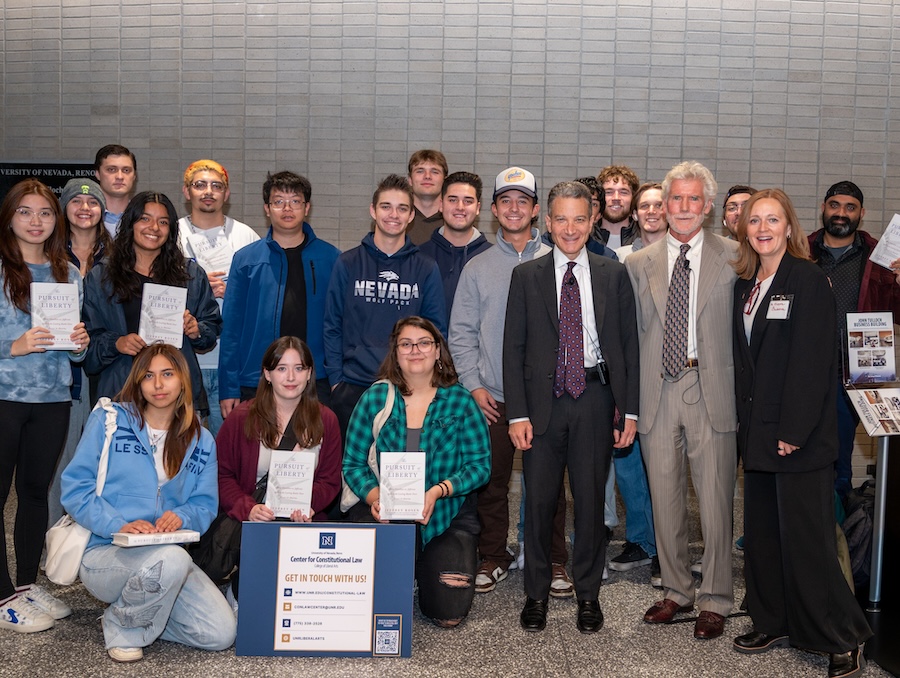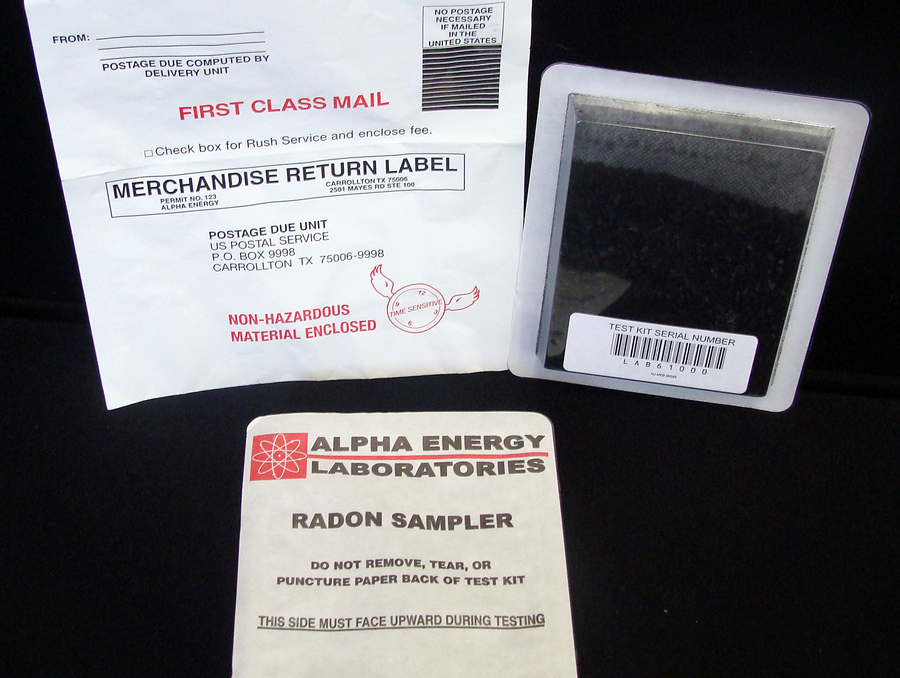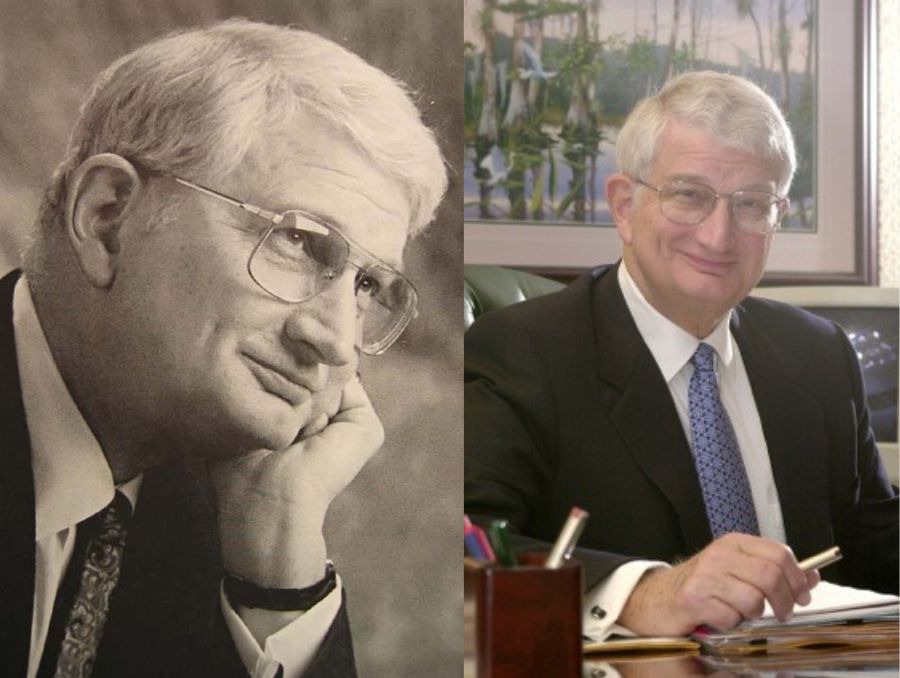An idea for a quick, affordable and accurate test for tuberculosis (TB) — the world’s leading cause of death from a single infectious agent — shows promise.
About $5 million in promise.
Electrical & Biomedical Engineering (EBME) Professor Xiaoshan Zhu and his colleagues have won a U.S. National Science Foundation (NSF) Phase 2 award to develop this test after proving their concept with funding from a $650,000 grant awarded in January 2024.
“This is a big coup for Xiaoshan and his team,” Sami Fadali, chair of the Electrical & Biomedical Engineering department, said.
Zhu and his colleagues — Microbiology & Immunology Professor David AuCoin; EBME Associate Professor Hao Xu; EBME Professor Jeongwon Park; Marketing Associate Professor Thomas Burnham; and Quantitative Methods & Learning Sciences Professor Leping Liu — developed quantum dots that have just the right amount of added manganese for biosensing applications. Those quantum dots emit light in a way that makes them useful for biosensing applications. After a pulse of light is applied to excite these tiny “manganese-doped” particles — which are tens of thousands of times smaller than the width of a stand of hair — they will still glow for around a millisecond, even without any further excitation light. This delayed emission of light, or time-resolved fluorescence, allows a measurement to be taken without interference of background light, meaning a more accurate reading.
And that is the simple explanation of the scientific basis supporting Zhu’s proposed test for TB. If successful, it could help end the persistent public health challenge of TB by 2035.
Filling a market gap in TB diagnosis
Zhu and his team, along with industry partners QueueD Insights, basically are proposing a point-of-care sensor that detects TB using time-resolved fluorescence (that delayed emission of light). The concept, in this early stage, is that the patient would provide a sample on a urine test strip. The strip would be designed to bind any TB-related biomarkers, which are not visible with regular instrumentation. The manganese-doped quantum dots in the strip would attach to the TB biomarker. The point-of-care sensor shines a pulse of light on the test and measures the glow to tell if the patient has TB.
This would be faster and easier to administer than current tests, which can involve phlegm or blood samples or a skin test and require a laboratory and skilled medical personnel to perform and interpret.
The proposed test also is designed to be highly sensitive, enhancing its ability to diagnose TB in HIV-negative patients, where detection can be more challenging. In addition, the QueueD Insights team aims to make the test affordable, guided by widely accepted target product profile guidelines of costing less than $6 per test and $2,000 in equipment.
In his application for Phase 2 award, Zhu noted that the primary significance of the team’s work is “providing a widely accessible, sensitive point-of-care sensor to a fill a market gap in TB diagnosis.”
‘Science is always like this’
If the idea of a point-of-care sensor that can diagnose medical conditions sounds like science fiction, that’s because it once was: Dr. McCoy in the 1960s television series “Star Trek” would wave a small “tricorder” over patients and get diagnoses.
Zhu’s platform — which theoretically could be uploaded to a smartphone and work like the fictional tricorder — measures light emitted by a substance after it has absorbed energy, and builds upon the work of other scientists and researchers.
Basically, the platform uses manganese-doped quantum dots that glow in a certain way when light hits them, which can show anomalies — or potential health issues — within the body. The platform would use imaging and artificial intelligence to figure out what the anomalies mean.
Zhu’s work in this area started in 2012, when he began developing a manganese-doped nanocrystal optimized for use in medical and science tools. He and his colleagues published a paper on this, “Mn doped AZIS/ZnS nanocrystals (NCs): Effects of Ag and Mn levels of NC optical properties,” in 2018 in the Journal of Alloys and Compounds.
Zhu and one of his colleagues, Violeta Demillo, received a patent on those particles in 2021, and the work continued.
In March 2022, Zhu and three colleagues published a paper detailing a potential new sensor that would measure light on a very, very small — nano — scale. Published in the online journal IEEE Sensors Letters, “A Compact and Sensitive Time-Resolved-Optical Reader for Bioassay Using Low-Energy Excitable and Long-Lived-Fluorescence Nanolabels,” details how such a device would be more sensitive than current technology and portable.
Now, with this NSF Phase 2 award, Zhu and the QueueD Insights team have an opportunity to put this into practice for TB diagnosis.
It takes years of research, building on the work of other scientists, to develop a technological concept that could benefit humanity. While Zhu and his team are at that point, he is mindful that the scientific work on quantum dots and time-resolved fluorescence that provided the basis for his novel TB test will be continued by others.
“The next job belongs to other people,” he said. “Science is always like this.”
